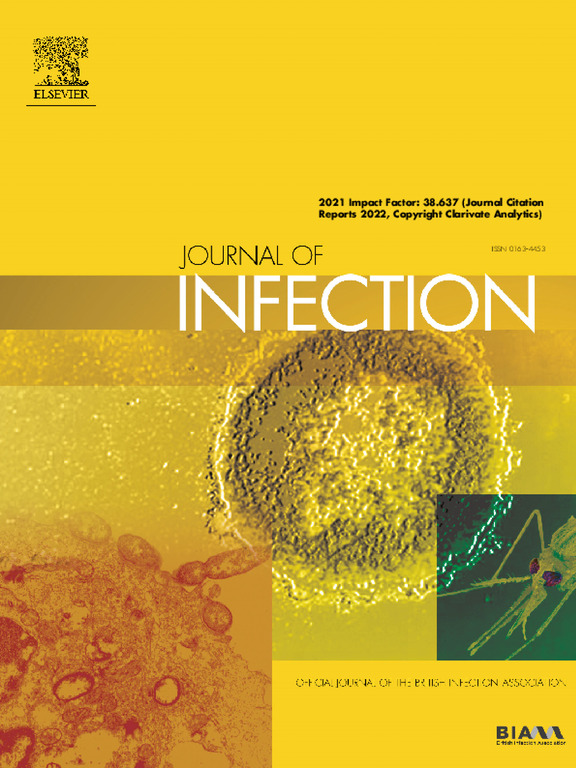美国联邦医疗保险参保者侵袭性曲霉病和毛霉病的地理分布及相关死亡率(2008-2015)
IF 11.9
1区 医学
Q1 INFECTIOUS DISEASES
引用次数: 0
摘要
背景:侵袭性霉菌感染——侵袭性曲霉病和毛霉菌病——在某些患者群体中死亡率高达90%。一些临床因素,如长期中性粒细胞减少症,已被充分研究,并与死亡率增加密切相关。然而,侵袭性曲霉病和毛霉病在不同地理位置的发病率及其对死亡率的影响仍未得到充分研究。方法利用2008-2015年医疗保险服务收费数据绘制侵袭性曲霉病和毛霉病的地理分布和发病率图。这些真菌感染的发病率和90天死亡率之间的关系被调查使用调整广义加性模型。结果:53321例患者诊断为侵袭性曲霉病,2655例诊断为毛霉病。美国西部地区报告的发病率最高(曲霉病:每10万人年25.69例;毛霉病:每10万人年1.34例)。IA发病率每10万人年增加5例,90天死亡率降低3.4% (RR: 0.966;95% ci: 0.961-0.972;(p;0.0001)解释侵袭性曲霉病和毛霉病在美国广泛分布,某些地区的发病率明显更高。对于侵袭性曲霉病,每10万名索赔人年每增加5例,90天死亡率就会降低3.4%,虽然幅度不大,但具有统计学意义。相反,发病率的上升并没有显著影响毛霉病的死亡率。本文章由计算机程序翻译,如有差异,请以英文原文为准。
Geographic distribution and associated mortality of invasive aspergillosis and mucormycosis among Medicare enrollees in the United States (2008-2015)
Background
Invasive mold infections—invasive aspergillosis and mucormycosis—have mortality rates as high as 90% in certain patient populations. Some clinical factors, such as prolonged neutropenia, are well-studied and are closely associated with increased mortality. However, the incidence of invasive aspergillosis and mucormycosis across geographic locations and its impact on mortality remains understudied.
Methods
Geographic distribution and incidence rates of invasive aspergillosis and mucormycosis were mapped using 2008–2015 Medicare fee-for-service data. The association between the incidence of these fungal infections and 90-day mortality was investigated using adjusted generalized additive modeling.
Findings
53,321 patients were diagnosed with invasive aspergillosis, and 2655 had a diagnosis of mucormycosis. The western region of the United States reported the highest incidence rates (aspergillosis: 25.69 cases per 100,000 person-years; mucormycosis: 1.34 cases per 100,000 person-years). For every increase of 5 cases per 100,000 person-years in the incidence of IA, there was a 3.4% reduction in 90-day mortality (RR: 0.966; 95% CI: 0.961–0.972; p<0.0001)
Interpretation
Invasive aspergillosis and mucormycosis are widely distributed in the United States, with certain regions experiencing significantly higher incidences. For invasive aspergillosis, each increase of 5 cases per 100,000 claimant years was associated with a modest yet statistically significant 3.4% reduction in 90-day mortality. Conversely, the rise in incidence did not significantly affect mortality rates for mucormycosis.
求助全文
通过发布文献求助,成功后即可免费获取论文全文。
去求助
来源期刊

Journal of Infection
医学-传染病学
CiteScore
45.90
自引率
3.20%
发文量
475
审稿时长
16 days
期刊介绍:
The Journal of Infection publishes original papers on all aspects of infection - clinical, microbiological and epidemiological. The Journal seeks to bring together knowledge from all specialties involved in infection research and clinical practice, and present the best work in the ever-changing field of infection.
Each issue brings you Editorials that describe current or controversial topics of interest, high quality Reviews to keep you in touch with the latest developments in specific fields of interest, an Epidemiology section reporting studies in the hospital and the general community, and a lively correspondence section.
 求助内容:
求助内容: 应助结果提醒方式:
应助结果提醒方式:


